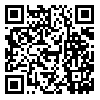Volume 15, Issue 4 (oct & Nov 2021)
payavard 2021, 15(4): 392-398 |
Back to browse issues page
Ethics code: IR.TUMS.SPH.REC.1399.246
Download citation:
BibTeX | RIS | EndNote | Medlars | ProCite | Reference Manager | RefWorks
Send citation to:



BibTeX | RIS | EndNote | Medlars | ProCite | Reference Manager | RefWorks
Send citation to:
Changizi V, Mohammadi M, Baradaran S, Taheri M. Effective dose and thyroid cancer risk in panoramic imaging. payavard 2021; 15 (4) :392-398
URL: http://payavard.tums.ac.ir/article-1-7130-en.html
URL: http://payavard.tums.ac.ir/article-1-7130-en.html
1- Professor, Department of Radiation Sciences, School of Allied Medical Sciences, Tehran University of Medical Sciences, Tehran, Iran
2- Master of Sciences Student in Radiation Biology and Radiation Protection, School of Allied Medical Sciences, Tehran University of Medical Sciences, Tehran, Iran ,Maryam2towin@gmail.com
3- Assistant Professor, Nuclear Science and Technology Research Institute, Tehran, Iran
4- Master of Science in Chemical Engineering, Radiation Protection Office, Center of the Country’s Nuclear Safety System, Tehran, Iran
2- Master of Sciences Student in Radiation Biology and Radiation Protection, School of Allied Medical Sciences, Tehran University of Medical Sciences, Tehran, Iran ,
3- Assistant Professor, Nuclear Science and Technology Research Institute, Tehran, Iran
4- Master of Science in Chemical Engineering, Radiation Protection Office, Center of the Country’s Nuclear Safety System, Tehran, Iran
Abstract: (1370 Views)
Background and Aim: On panoramic radiographs, sensitive organs, including the thyroid, are exposed to radiation. Thyroid cancer is one of the most common cancers in Iran. That is why, in this study the effective dose and risk of thyroid cancer were estimated on panoramic radiography.
Materials and Methods: Seventy GR200 thermoluminescence (TLD) dosimeters were used to estimate the absorbed dose of thyroid. The dosimeters were calibrated and placed on the patients’ necks during panoramic radiography. After dosimeters were read, the mean absorbed dose and effective thyroid dose were calculated in three groups with different radiation conditions. Lifetime Attributable Risk (LAR) of thyroid cancer was estimated using the model presented in the BEIR VII report. GraphPad Prism statistical software was used to analyze the data.
Results: The mean absorbed dose of thyroid lobes in groups M, L, XL (According to mandibular size) was estimated to be 0.116±0.01, 0.123±0.04 and 0.03±0.134 mg, respectively. The right thyroid lobe in group XL with absorption dose of 0.143±0.05 mg and the left lobe in group M with absorption dose of 0.106±0.03 mg had the highest and the lowest absorption doses, respectively. The difference between the absorbed doses of the right and left thyroid lobes in any of the three groups was not statistically significant. Thyroid absorption doses in these three groups were not statistically significant. The highest risk of thyroid cancer in the age range of 15-60 years was related to the age of 15, which was estimated to be 0.238 in women and 0.042 in men per 100,000 people.
Conclusion: In lower ages and among women, the risk of thyroid cancer is higher than that of men. Also, due to the impossibility of limiting thyroid radiation in panoramic radiography using lead thyroid collar that causes metal artifacts, we should reduce the number of panoramic radiographs as much as possible, especially at lower ages.
Materials and Methods: Seventy GR200 thermoluminescence (TLD) dosimeters were used to estimate the absorbed dose of thyroid. The dosimeters were calibrated and placed on the patients’ necks during panoramic radiography. After dosimeters were read, the mean absorbed dose and effective thyroid dose were calculated in three groups with different radiation conditions. Lifetime Attributable Risk (LAR) of thyroid cancer was estimated using the model presented in the BEIR VII report. GraphPad Prism statistical software was used to analyze the data.
Results: The mean absorbed dose of thyroid lobes in groups M, L, XL (According to mandibular size) was estimated to be 0.116±0.01, 0.123±0.04 and 0.03±0.134 mg, respectively. The right thyroid lobe in group XL with absorption dose of 0.143±0.05 mg and the left lobe in group M with absorption dose of 0.106±0.03 mg had the highest and the lowest absorption doses, respectively. The difference between the absorbed doses of the right and left thyroid lobes in any of the three groups was not statistically significant. Thyroid absorption doses in these three groups were not statistically significant. The highest risk of thyroid cancer in the age range of 15-60 years was related to the age of 15, which was estimated to be 0.238 in women and 0.042 in men per 100,000 people.
Conclusion: In lower ages and among women, the risk of thyroid cancer is higher than that of men. Also, due to the impossibility of limiting thyroid radiation in panoramic radiography using lead thyroid collar that causes metal artifacts, we should reduce the number of panoramic radiographs as much as possible, especially at lower ages.
Send email to the article author
| Rights and permissions | |
 |
This work is licensed under a Creative Commons Attribution-NonCommercial 4.0 International License. |





